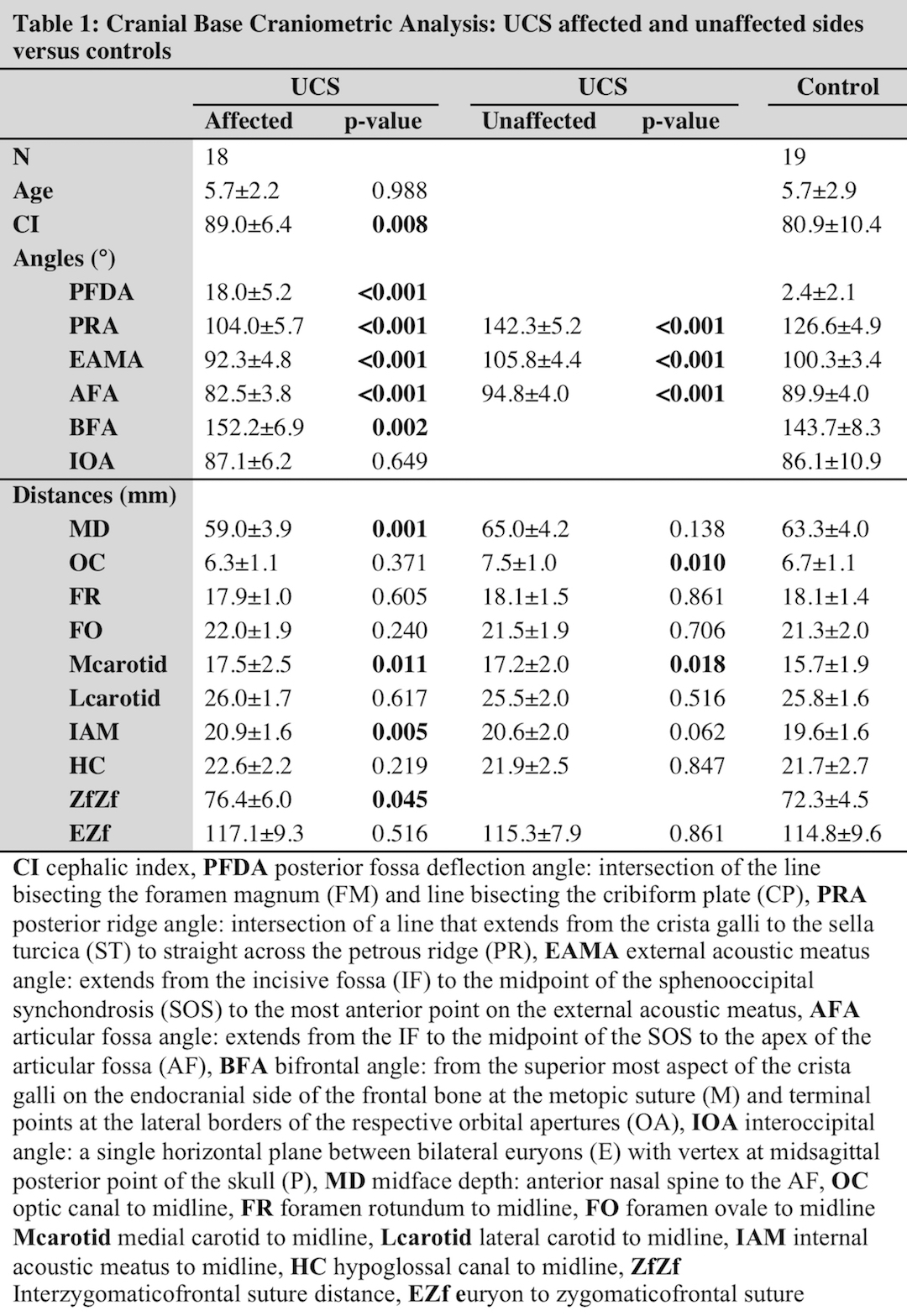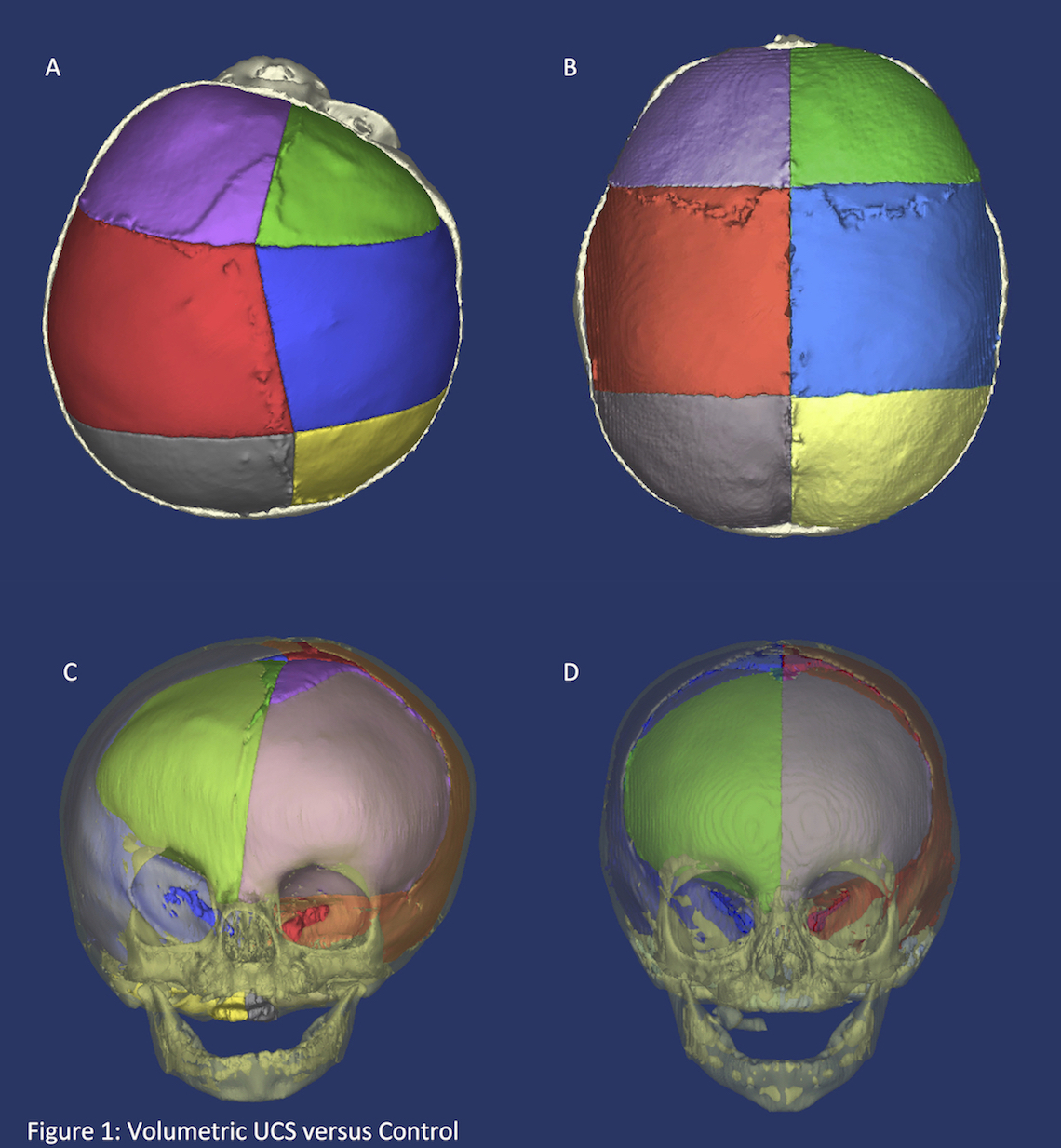A volumetric and craniometric analysis of cranial base differences in unicoronal craniosynostosis
Daniel Mazzaferro, MBA, Ari Wes, BA, Sanjay Naran, MD, Ian C. Hoppe, MD, Scott Bartlett, MD, Jesse Taylor, MD.
The Children's Hospital of Philadelphia, Philadelphia, PA, USA.
BACKGROUND: We hypothesized that patients with unicoronal craniosynostosis (UCS) have deviation of the vault, cranial base, and face resulting in significant differences in skull base morphology and segmental cranial vault volume relative to non-affected controls.
METHODS: UCS patients were collected from our IRB-approved, prospective, craniofacial registry; controls were from a trauma registry. Mimics® software was used to compare those with UCS to controls for a series of standardized craniometric angles and distances. A segmented volumetric analysis of anterior, middle, and posterior cranial fossae was performed, as well.
RESULTS: The study included 18 patients with UCS and 19 controls. Nearly all angles measured between the synostosed side of UCS and control patients—posterior fossa deflection angle, petrous ridge angle, external acoustic meatus angle, articular fossa angle, and bifrontal angle—were significantly different (p<0.002) (Table 1). Overall cranial vault volume did not differ between UCS and controls (p= 0.250). Three volumetric ratios comparing the synostosed side to the contralateral were significantly less than controls: anterior (0.44±0.03 vs. 0.5±0.01, p<0.001), middle (0.45±0.02 vs. 0.5±0.02, p<0.001), posterior (0.46±0.02 vs. 0.50±0.02, p<0.001). The ratio of total middle volume to total cranial volume was larger in UCS patients vs. controls, but the posterior ratio was smaller: anterior (0.13±0.02 vs. 0.12±0.02, p=0.545), middle (0.50±0.05 vs. 0.42±0.04, p=0.001), posterior (0.37±0.05 vs. 0.45±0.03, p=0.001) (Figure 1).
CONCLUSIONS: This study provides quantitative evidence of the degree of angulation and torsion of the cranial base in UCS and its profound effect on volumetric differences in the cranial vault, with significant restriction on the synostosed side and compensatory expansion on the non-synostosed side. Future work will focus on the effects of volumetric differences on cerebral architecture and postoperative volumetric changes. 

Back to 2017 Program




